When Movie Magic Was Made By Hand: The Magic We've Lost
From The Thing to Gremlins, practical effects of the 1970s-90s created tangible magic that digital effects can't match. The perceptual realism we've lost.
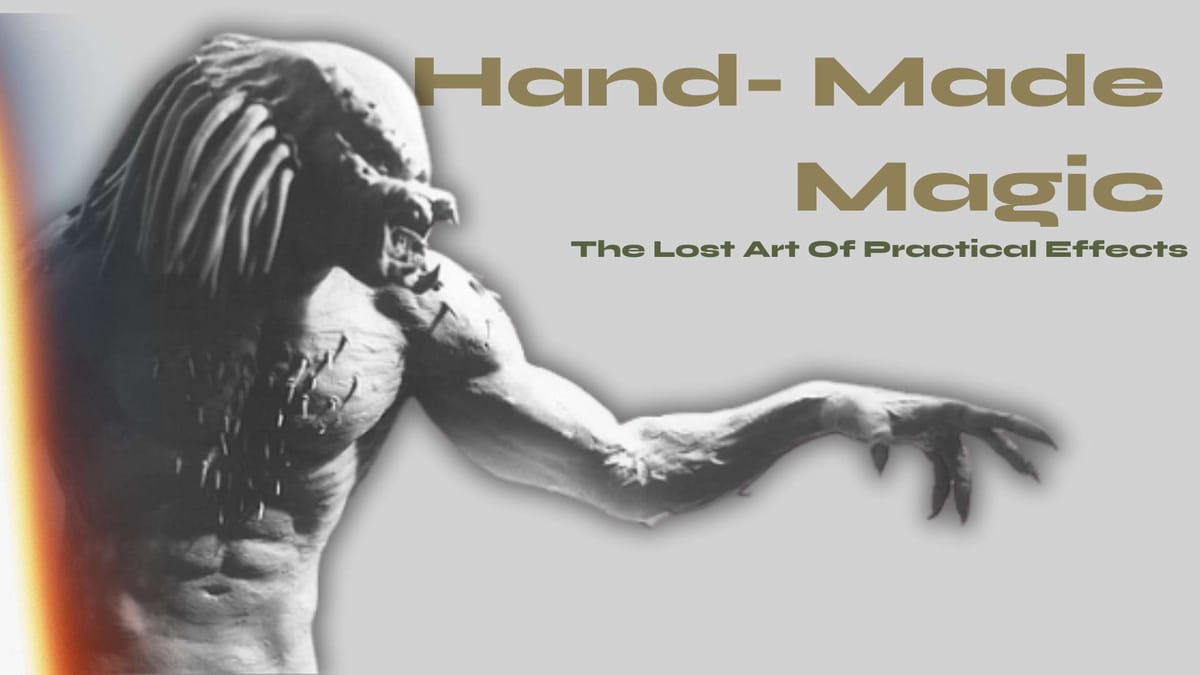
There's something you can't replicate about a creation that actually existed.
Not in a computer. Not in a rendering farm. Not in whatever AI generation tool arrives next year. But truly, physically existed—taking up space in a studio, operated by sweating puppeteers, worn by suffering performers, smelling of foam latex and hydraulic fluid.
If you were a child in the 1980s, you remember the excitement. The Gremlins weren't just characters on screen—they were things that had been built, photographed, existed. E.T. was real in a way that transcended cinema. You could picture the workshop where he was constructed. The Predator was a seven-foot actor in an ingenious suit. The Alien Queen required 16 operators.
These creatures lived in your head differently because they'd lived in physical space first. Your brain processed them as real in a way digital constructs never quite achieve.
We've lost that connection. By 2026, roughly 80% of on-screen effects will be digital constructs or AI-generated imagery, it's estimated. Technically impressive. Often visually stunning. But something fundamental has been severed. The tangible link between our world and the fictional one. The perceptual realism that made suspension of disbelief effortless rather than work.
The 1970s through 1990s represent the apex of practical effects artistry—not just technical achievement, but alchemy performed under impossible deadlines, on shoestring budgets, with techniques invented on the spot. These weren't pixels rendered on a server farm. They were creations you could touch, effects that cast shadows, work that actually terrified the performers standing opposite them.
This is the story of when movie magic was made by hand—the creative genius from the 1970s to the 1990s that brought our favourite characters to life. And what we've lost now that it mostly isn't.
Thirty years of innovation means thousands of remarkable creations. This isn't comprehensive—it's subjective, personal, impossible to be complete. These are the practical effects that defined an era, the work that still haunts memory decades later.
The Pioneers Who Changed Everything
In 1970, Dick Smith transformed 33-year-old Dustin Hoffman into a 121-year-old man for Little Big Man. Six weeks to develop the technique. Five hours to apply each morning. Smith's multi-piece overlapping foam latex appliances didn't just age Hoffman—they revolutionised prosthetic makeup entirely. Known as "The Godfather of Makeup," Smith established techniques that remain industry standard today.


Dick Smith on Little Big Man and The Exorcist
Three years later, he terrified audiences with The Exorcist. Spinning head mechanisms. Projectile vomit through hidden tubes and pea soup. Possessed Regan makeup that transformed a child actress into something genuinely demonic. The film became a cultural phenomenon. Smith's work proved horror effects could be both grotesque and artistically significant.
In 1975, a malfunctioning mechanical shark inadvertently changed cinema. Bruce—the nickname for three 25-foot mechanical sharks created by Robert Mattey and Roy Arbogast for Jaws—kept breaking down. Saltwater corroded the mechanisms. The sharks sank. They refused to work.
Spielberg was forced to show less. This made it exponentially more terrifying. Sometimes limitations create better cinema than seamless execution ever could. And even when practical effects failed—rubber suits that looked fake, puppets with visible strings—they maintained a physical presence that bad CGI simply lacks. You laughed at them, but you still believed they existed somewhere.
Two years later, John Dykstra and his team at the newly formed Industrial Light & Magic created something that had never existed: the Dykstraflex motion-control camera system. For Star Wars, they needed miniature spaceships to move with balletic precision through multiple passes. The solution required inventing entirely new technology. The result changed cinema forever.
This was the pattern that would define the era. Impossible challenge, innovative solution, industry standard.
By 1978, Tom Savini was ready to announce himself. Dawn of the Dead featured zombie makeup and gore effects that established him as the master of practical horror. Helicopter decapitation. Screwdriver through the ear. Exploding heads. Savini's work was visceral, unflinching, massively influential.


Tom Savini's practical effects on Dawn Of The Dead
The horror genre would explode in the 1980s largely because of what he'd proven possible.
The Shape-Shifters
Transformation sequences became the ultimate test of an effects artist's skill. Two films released five months apart in 1981 set the bar impossibly high.
Rick Baker won the inaugural Academy Award for Best Makeup for An American Werewolf in London. His transformation took a full week to shoot. Numerous "Change-o" heads, hands, and feet swapped through various stages. The stretching effect used unique material that dissolved over time. Hair growth was filmed backward—Baker applied all the hair to David Naughton, then trimmed it progressively for each frame.
Meanwhile, Baker's protégé Rob Bottin was creating a rival sequence for The Howling. Only 21. Given creative freedom when Baker left for the competing project. Bottin wanted transformation without camera tricks. No lap dissolves. No optical cheats. His effect appeared five months before his former mentor's similar scene.
When Baker departed for American Werewolf, another young protégé would also start making his name—Steve Johnson, who would go on to create memorable effects throughout the decade.
But Bottin was just getting started.
Recommended...
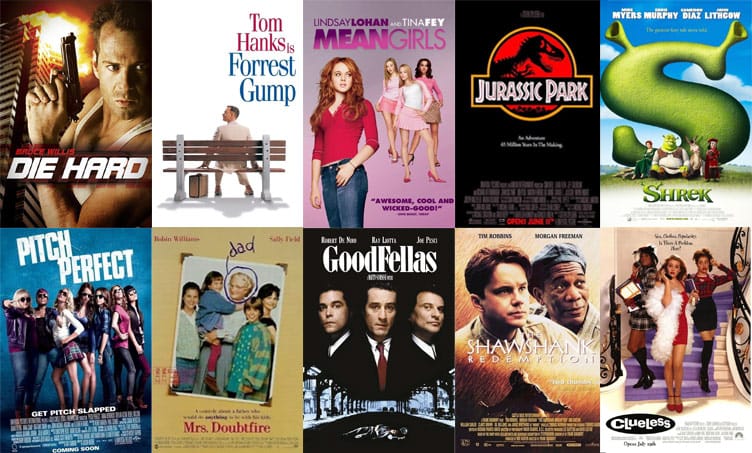
The Body Horror Master
For The Thing in 1982, Bottin worked seven days a week for 57 weeks straight. He collapsed. Hospitalisation for exhaustion, pneumonia, bleeding ulcer. His crew of 35-plus artists produced every creature effect except the transformed dog—Stan Winston handled that nightmare when Bottin's schedule made it impossible.
The effects budget swelled from $750,000 to $1.5 million. They used every conceivable technique: hand puppets, marionettes, reverse filming, radio controls, wires, hydraulics, pull cables. Gore ingredients included heated bubble gum, strawberry jam, mayonnaise, cream corn, gelatin, food thickener.
For the Norris transformation—arguably the most famous scene in practical effects history—they created a fibreglass dummy of Charles Hallahan with his chest hair pattern meticulously recreated. Bottin climbed inside the Blair Monster to operate the dog bursting from its stomach. Cinematographer Dean Cundey worked closely with him, developing techniques using tiny spots of light and shadows that gave the creatures their otherworldly menace.
Time has proven The Thing contains some of the finest practical effects ever committed to film.
Three years later, Bottin created what many consider one of the greatest makeup designs in cinema history—Tim Curry's Lord of Darkness for Legend.
Lightweight fibreglass horns with a harness system. Five and a half hours of application each morning. An hour-long bath to remove it at day's end. The result was breathtaking—a demon of such beauty and menace that it became iconic. The film earned an Oscar nomination for Best Makeup.
The Italian Connection
Carlo Rambaldi was the secret weapon behind several of cinema's most beloved creations. For Alien in 1979, the Italian effects artist constructed the animatronic "hero" alien head. When the UK team failed, Rambaldi was brought in. Four weeks at his Hollywood company. Three mechanical alien heads delivered.
He'd already won an Oscar for King Kong in 1976. He'd win another for E.T. in 1982.
For E.T., Rambaldi devoted 5,000 hours to the design. $1.5 million. A creature with 32 points of articulation in the face alone. Capable of 35 distinct facial expressions. The face was inspired by Carl Sandburg, Albert Einstein, and Ernest Hemingway. The extendable neck came from Rambaldi's own painting Women of Delta.
Spielberg operated E.T.'s smile function himself. That's how hands-on these productions were.
The result transcended cinema. Children didn't just watch E.T.—they knew him, believed in him, mourned when he nearly died. That emotional connection was possible because E.T. was real. Not a fictional character made tangible through animation, but an actual constructed being that cameras photographed. The dividing line between fiction and reality blurred in a way purely digital creations struggle to achieve.
Recommended...
In Conversation with Stephen Norrington
The Blade director opens up about his creative process, Hollywood politics, and what he's working on now
The DIY Revolution
Not every effects masterpiece had Industrial Light & Magic's resources.
Peter Jackson spent four years making Bad Taste on weekends for roughly $25,000 New Zealand dollars. Masks baked in his mother's oven. Weapons built from aluminium tubing and plumbing fixtures. Jackson built his own Steadicam counterweight rig for under twenty quid.

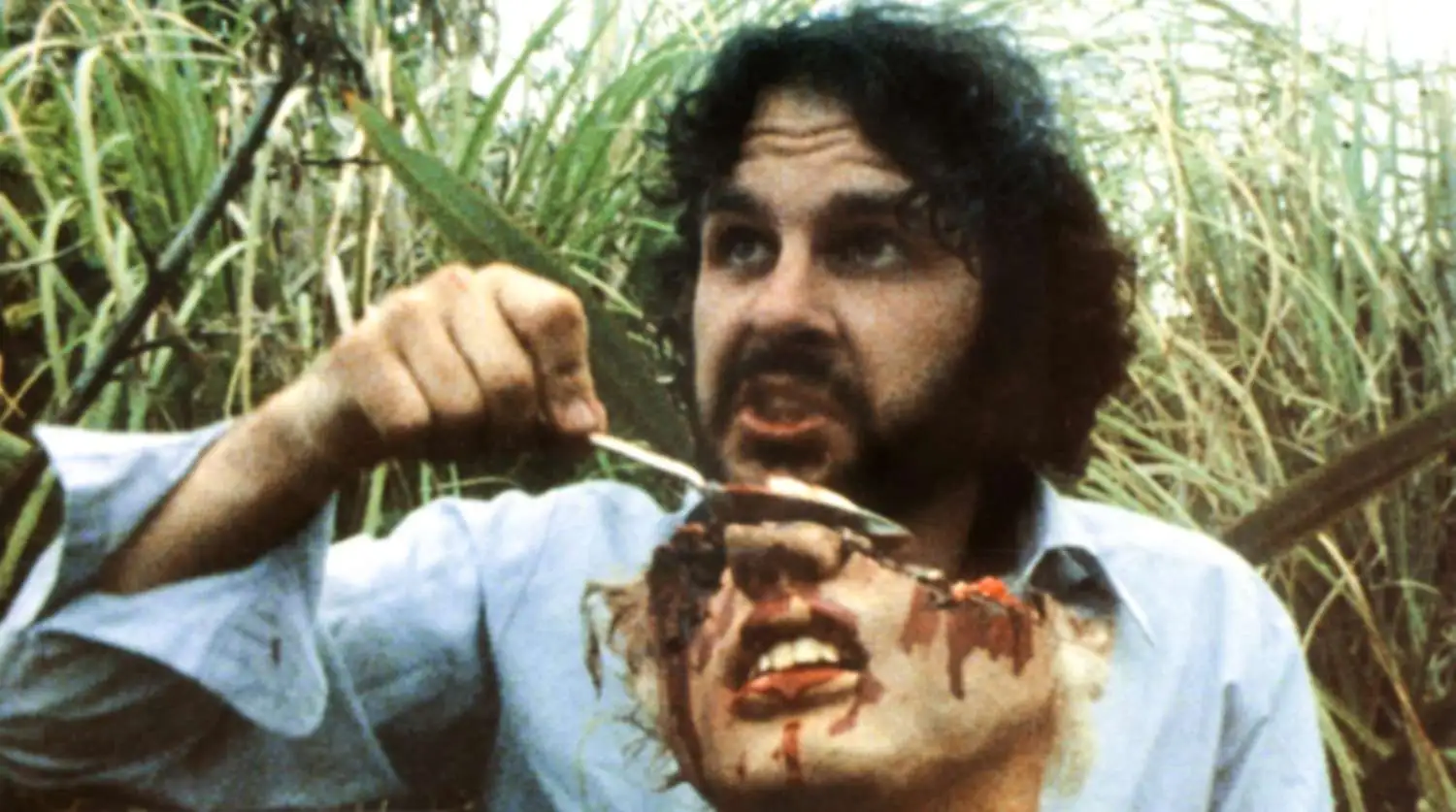
DIY practical effects from Peter Jackson's Bad Taste
The film launched his career.
Frank Henenlotter created Aylmer for Brain Damage—a singing, brain-eating parasite. Hand puppet with an animatronic face. Designer Gabe Bartalos often operated the puppet whilst submerged in bathtubs or hiding behind couches. It looked phallic yet somehow remained oddly charismatic. That's the peculiar genius of practical puppetry—you can make an audience care about a brain-eating worm.
The Unsung Masterpieces
Some of the era's most impressive work exists in films that never achieved the recognition of Aliens or Jurassic Park.
Screaming Mad George created what might be the most extreme practical body horror in cinema history for Society in 1989. The finale—"The Shunting"—is a surreal orgy of melting flesh, fusing bodies, physical distortion. George used his surrealist art background to create effects that defied biological logic. Faces appearing on hands. Bodies turning inside out. Massive quantities of slime, foam latex, bladder effects achieving "liquid flesh" without a single frame of CGI.
For A Nightmare on Elm Street 4: The Dream Master, Steve Johnson and Screaming Mad George created the film's most memorable sequence—Debbie's transformation into a cockroach. The "rip-away" face. The Pizza of Souls with trapped faces in the cheese. Freddy's chest prosthetic with screaming faces. Peak MTV-style horror effects.
Kevin Yagher created the slick, muscular alien parasite for The Hidden.
Jennifer Aspinall defined the "Melt Movie" subgenre with Street Trash—bums melting into bright blue, green, and orange slime rather than traditional red blood. Technicolour gore. Punk rock made visceral.
The Puppet Masters
Some films pushed puppetry to its absolute limits—and in doing so, created creatures that an entire generation would never forget.
Chris Walas terrified himself whilst creating Gremlins. The script had creatures doing so many difficult things, and the project kept growing. Gizmo came into being during production—he wasn't in the original script. Suddenly they needed twice the number of puppets. The Mogwai were mostly animatronic due to their small size. The Gremlins were designed as hand puppets.
Walas was terrified audiences wouldn't buy cartoony creatures as real characters. At the first screening, he was certain the crowd would boo when Gizmo emerged from his box.
They went wild instead.
That response wasn't just about clever puppetry. It was about connection. Children in 1984 didn't just watch Gizmo—they believed in him. He existed somewhere. In a studio, on a set, operated by skilled hands. That tangible reality created an emotional bond that transcended the screen. You wanted to protect Gizmo not just because he was cute, but because he was real.
Two years later, Walas created the seven-stage transformation for The Fly. Each stage grew progressively more grotesque, similar to insect stages of growth. A team of 30-plus crew with only three months of pre-production. More than two dozen special makeup effects, rigs, and puppets. They had less than a month to design, cast, and customise Jeff Goldblum's makeup after his casting.
Walas won the Academy Award for Best Makeup. A masterclass in body horror.
For Little Shop of Horrors, Lyle Conway created Audrey II in four sizes. The largest "Mean Green Mother" weighed one tonne and required roughly 60 operators. Because the plant had to lip-sync with pre-recorded songs, it moved in slow motion at 12 or 16 frames per second, then was sped up to 24fps. This meant Rick Moranis had to mouth his lines in slow motion during filming.
The Youtube Channel Corridor Crew did a really good video explaining the challenges of pulling off this scene.
It remains the most complex lip-syncing puppet creation in film history.
The Monster Makers
Stan Winston became the industry's go-to creature creator through a combination of artistry and engineering genius.
For The Terminator in 1984, he designed the T-800 endoskeleton and damaged flesh effects using hydraulic animatronics and remote-controlled mechanisms. The collaboration with James Cameron would prove one of cinema's most fruitful partnerships.
Two years later, Winston created the Queen Alien for Aliens—a 14-foot hydraulic puppet requiring 16 operators. Supported by a crane arm. Head controlled by hydraulic steering wheels. Legs puppeted externally with rods. Face operated by cables. The finale duel between the Queen and the Powerloader required approximately 20 hands to execute.
Only in-camera effects and smart editing. Not a single digital pixel.
For Predator in 1987, Winston sketched monster ideas on a plane ride alongside Cameron. Cameron suggested he'd always wanted to see a creature with mandibles. That became part of the Predator's iconic look. Winston found further inspiration from a painting of a Rastafarian warrior in producer Joel Silver's office. His team worked around the clock, seven days a week for six weeks. Seven-foot-four-inch actor Kevin Peter Hall wore the suit with its fully animatronic face.
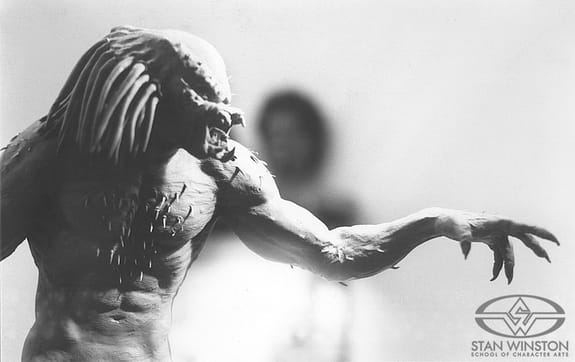
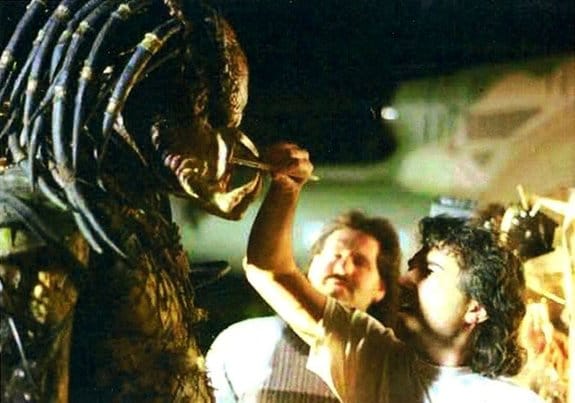
Practical Effects From The Predator
The same year, Rick Baker won the Oscar for Best Makeup for Harry and the Hendersons—despite both being achieved identically. Same technique. Same actor inside the suit.
What Happened To?
Check out these articles to see what happened to other big stars who faded from the spotlight:
The Stop-Motion Virtuosos
Phil Tippett co-developed the go-motion technique for The Empire Strikes Back, animating the AT-AT Imperial Walkers and tauntauns. The technique added motion blur to stop-motion animation, making the movements feel natural rather than stuttered.
For RoboCop, producer Jon Davison needed ED-209 on a tight budget. Tippett looked at Ray Harryhausen's work with Charles Schneer and realised rear-screen-composited stop motion was faster and cheaper than optical compositing.
Designer Craig Davies—only 23—created ED-209's look. The full-scale model stood seven feet tall, weighed 300 to 500 pounds. Four months to build on 100-hour work weeks. Two 12-inch miniatures took another four months. Tippett conceived ED-209's movement as "unanimal"-like. As if it were about to fall over before catching itself.
The result was one of cinema's most memorable robots—powerful, terrifying, somehow absurd as it tumbles down stairs.
The Art Direction Maestros
Sometimes the entire environment was the effect.
Anton Furst won the Academy Award for Best Art Direction for Batman, creating Gotham City using massive sets at Pinewood Studios and detailed matte paintings. Derek Meddings created the Batwing and cathedral crash using large-scale miniatures. The gothic superhero aesthetic they established influences the genre to this day.
Douglas Trumbull supervised visual effects for both Close Encounters of the Third Kind and Blade Runner. For Close Encounters, he converted a 13,500-square-foot building into a complete studio. Visual effects budget of $3.3 million—enough to produce another entire film. For Blade Runner, he established the dystopian cyberpunk look through miniatures and matte paintings. Dark, misty, rain-soaked, with neon signs and stark light contrasts.
The Gore Specialists
Tom Savini considers Day of the Dead his finest work. Budget slashed in half. Effects remained incredibly ambitious. The "Bub" zombie required extensive prosthetic work to give expression and character. Captain Rhodes' death—the famous "Choke on 'em!" scene—involved a false floor, prosthetic torso, and real animal intestines for the disembowelment.
The film marked the early collaboration of Greg Nicotero and Howard Berger, who would go on to found KNB EFX Group. Their formative work together happened on Evil Dead II, where they created Henrietta—a full-body foam latex suit worn by Ted Raimi. So hot he could only wear it for 20 minutes at a time.

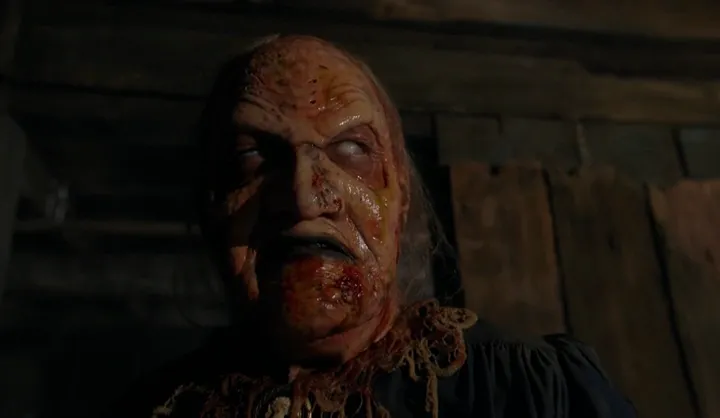
Scanners and Day Of The Dead Practical Effectss
Dick Smith returned to horror for Scanners, creating the film's iconic exploding head. A plaster skull covered with gelatin, packed with latex scraps, wax, leftover burgers, dog food, rabbit livers, and "stringy stuff." Shot from behind with a 12-gauge shotgun. Smith also developed prosthetic bladders for the climactic scanner duel—veins popping on faces—that he'd created for Altered States but hadn't yet used.
The Hybrid Era Begins
By 1989, the writing was on the wall—though few recognised what was being lost alongside what was being gained.
Dennis Muren supervised visual effects for The Abyss, pioneering CGI with the water pseudopod, and the underwater alien creations by Steve Johnson's XFX, Inc. ILM spent six months creating 75 seconds of computer graphics. Eight facial expressions scanned from Ed Harris. Twelve from Mary Elizabeth Mastrantonio for the face-mimicking scene.
But even this groundbreaking CGI was mostly composited using traditional optical printing. Only one shot composited digitally. The actors still interacted with physical water. The creature still had to exist within the practical environment of a submerged set. There was tangibility.
The film won the Academy Award for Best Visual Effects. Within two years, the liquid metal T-1000 would appear in Terminator 2. Two years after that, digital dinosaurs would roam Jurassic Park.
But even those landmark CGI films relied heavily on practical effects. Winston's life-sized animatronic dinosaurs. Tippett's go-motion techniques adapted for digital animation. The T-1000 intercutting with Robert Patrick in a silver foil costume.
The revolution wasn't replacing practical effects. It was learning when to use which tool.
That balance would be lost within a decade. By the mid-2000s, the pendulum had swung decisively toward digital. By 2025, physical effects are the exception—reserved for prestige productions or directors with enough clout to demand them.
What We've Lost
Watch a child react to a modern CGI creation. Then find footage of audiences watching Gremlins or E.T. for the first time in 1982.
The difference is palpable.
When you knew a creation was physically real—that it existed somewhere, that cameras photographed an actual thing—your brain processed it differently. The suspension of disbelief required less suspension. Gizmo wasn't pixels. He was foam latex, animatronics, and puppeteers. Took up space. Cast shadows. Had weight.
That connection has been severed.
There's something bigger at play here—call it perceptual realism. When your brain knows something was created digitally, it processes the experience differently. The suspension of disbelief becomes work rather than instinct. You're watching a technical achievement rather than believing in a world.
This affects immersion in ways we're only beginning to understand. CGI characters, no matter how technically perfect, often fail to embed themselves in memory the way practical creations do. Your brain knows the landscape is digital. Knows the creature doesn't exist anywhere but in code. That knowledge creates distance. Distance creates detachment. Detachment creates forgettability.
It's not just nostalgia. It's how our brains process light, shadow, and physical presence—the tangible cues that signal "real" even when we know it's fiction.
This era produced innovations that remain relevant: motion control photography, animatronic puppetry, prosthetic makeup techniques, miniature photography, matte painting traditions. The artists who emerged—Baker, Bottin, Winston, Walas, Tippett, Johnson—defined the visual language of modern cinema.
More importantly, they created a philosophy of problem-solving born from physical limitations. When faced with the impossible, they invented solutions. When budgets ran out, they improvised. When technology didn't exist, they built it.
These Maverick's weren't just technicians. They were artists, engineers, inventors, occasionally madmen who hospitalised themselves in pursuit of the perfect monster.
The foam latex smelled of chemicals. The hydraulic fluid leaked. The performers inside creature suits genuinely suffered. The effects supervisors collapsed from exhaustion. Brutal, brilliant, utterly irreplaceable.
By 2025, artificial intelligence can generate a creation in seconds. Render farms can perfect every detail. Motion capture can translate human performance onto any digital form. The technology is remarkable. The artistry involved in wielding these tools shouldn't be diminished.
But something has been lost that's difficult to quantify.
Three decades later, we're still talking about that exploding head. That chestburster. That transformation sequence. That creature emerging from the Antarctic ice. These images are seared into collective memory in a way even the most impressive modern CGI struggles to achieve.
Perhaps it's because they were made by hand. Perhaps it's because they occupied physical space first, then appeared in fictional ones. Perhaps it's because we could sense the human ingenuity, the physical sweat, the tangible craftsmanship radiating from every frame.
Or perhaps it's simpler.
They were real. And we knew it. And that made all the difference.


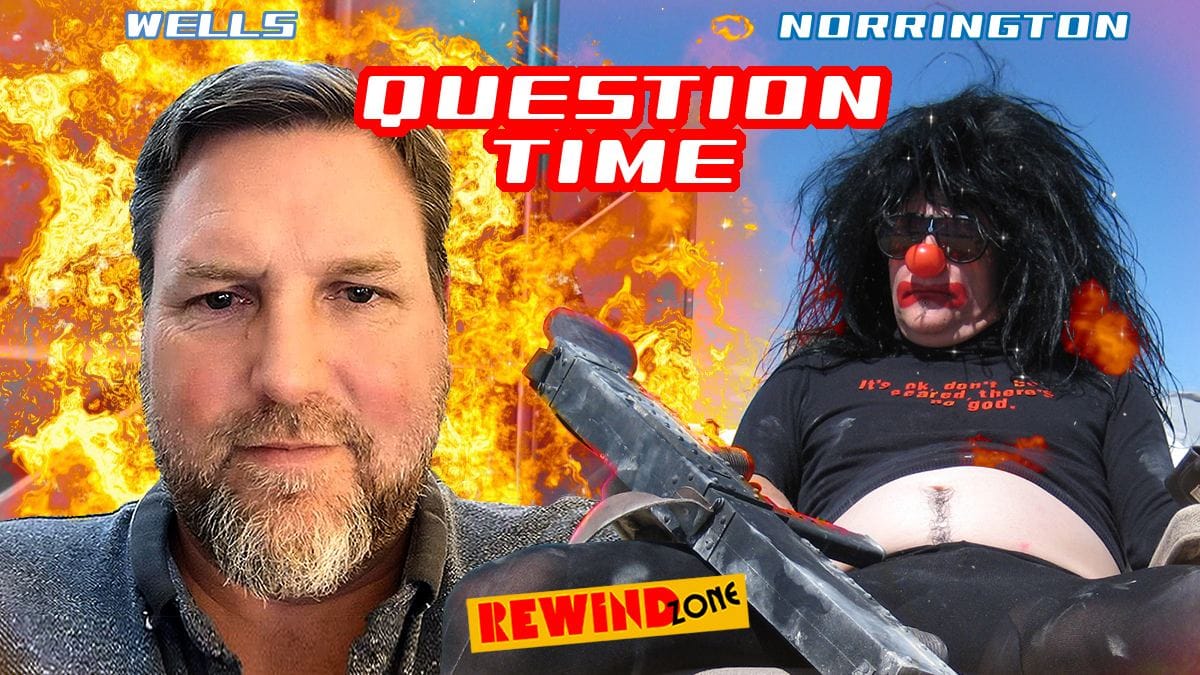

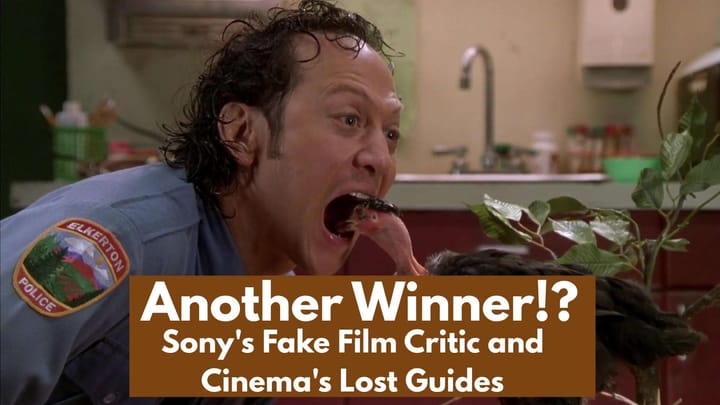

Comments ()